
Mossel Bay is a harbour town of about 170,000 people on the Garden Route of South Africa. It is an important tourism and farming region of the Western Cape Province. Mossel Bay lies 400 kilometres east of the country's seat of parliament, Cape Town, and 400 km west of Gqeberha, the largest city in the Eastern Cape. The older parts of the town occupy the north-facing side of the Cape St Blaize Peninsula, whilst the newer suburbs straddle the Peninsula and have spread eastwards along the sandy shore of the Bay.

The MBTA Commuter Rail system serves as the commuter rail arm of the Massachusetts Bay Transportation Authority's (MBTA's) transportation coverage of Greater Boston in the United States. Trains run over 394 mi (634 km) of track to 135 stations. It is operated under contract by Keolis, which took over operations on July 1, 2014, from the Massachusetts Bay Commuter Railroad Company (MBCR).
The following lists events that happened during 1925 in South Africa.

The Sydney and Louisburg Railway (S&L) was a Canadian railway. Built to transport coal from various mines to the ports of Sydney and Louisbourg, the S&L operated in the eastern part of Cape Breton County, Nova Scotia. The railway uses a slightly different spelling for the town of "Louisbourg".

Worcester is a town in the Western Cape, South Africa. It is the third-largest city in the Western Cape Province of South Africa. It is located 120 kilometres (75 mi) north-east of Cape Town on the N1 highway north to Johannesburg.
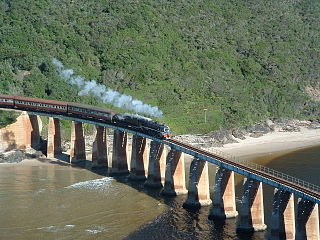
The Outeniqua Choo Tjoe was the last remaining continually-operated passenger steam train in Africa, ending operation in August, 2006. The line on which it operated links the towns of George and Knysna in the Western Cape, South Africa, and was completed in 1928. The scenic 67-kilometre (42 mi) route from George took 3 hours, following the rugged coastline of the Garden Route,and passing through Victoria Bay, Wilderness, Goukamma, and Sedgefield before crossing a bridge over the Knysna Lagoon and ending at the Knysna station.

The Langeberg Range is a mountain range in the Western Cape province of South Africa. Its highest peak is Keeromsberg at 2,075 m that lies 15 km northeast of the town of Worcester. Some of the highest peaks of the range are located just to the north of Swellendam, in a subrange known as the Clock Peaks whose highest point is the 1,710 m high Misty Point. Local lore states one can tell the time by means of the shadows cast by the seven summits of the Clock Peaks.

The Overberg branch line is a railway line in the Western Cape, South Africa. It runs from Cape Town through Somerset West and Caledon to Bredasdorp.

The South African Railways Class 7A 4-8-0 of 1896 was a steam locomotive from the pre-Union era in the Cape of Good Hope.

The South African Railways Class 7B 4-8-0 of 1900 was a steam locomotive from the pre-Union era in Transvaal.
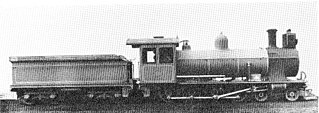
The South African Railways Class 7C 4-8-0 of 1902 was a steam locomotive from the pre-Union era in the Cape of Good Hope.

The South African Railways Class 7D 4-8-0 of 1915 was a steam locomotive.

The South African Railways Class 7E 4-8-0 of 1899 was a steam locomotive from the pre-Union era in the Cape of Good Hope.
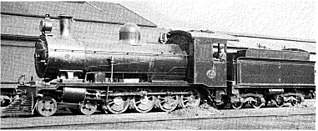
The South African Railways Class 7F 4-8-0 of 1913 was a steam locomotive.

The South African Railways Class 4 4-8-2 of 1911 was a steam locomotive from the pre-Union era in the Cape of Good Hope.

The South African Railways Class GK 2-6-2+2-6-2 of 1923 was an articulated steam locomotive from the New Cape Central Railway era.

In the early 1900s, 2 ft narrow-gauge railway lines started playing a significant role in South Africa. They facilitated the transport of various agricultural and mineral produce from locations hardly accessible by road. They therefore enabled many communities to become prosperous.
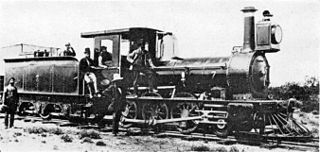
The Cape Government Railways 1st Class 2-6-0 of 1876 by Beyer, Peacock and Avonside was a South African steam locomotive from the pre-Union era in the Cape of Good Hope.

The Metropolitan & Suburban 4-6-2T of 1896 was a South African steam locomotive from the pre-Union era in the Cape of Good Hope.
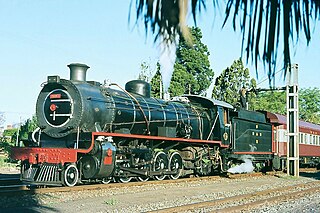
The South African Railways Class 14C 4-8-2 of 1919 was a steam locomotive.



















